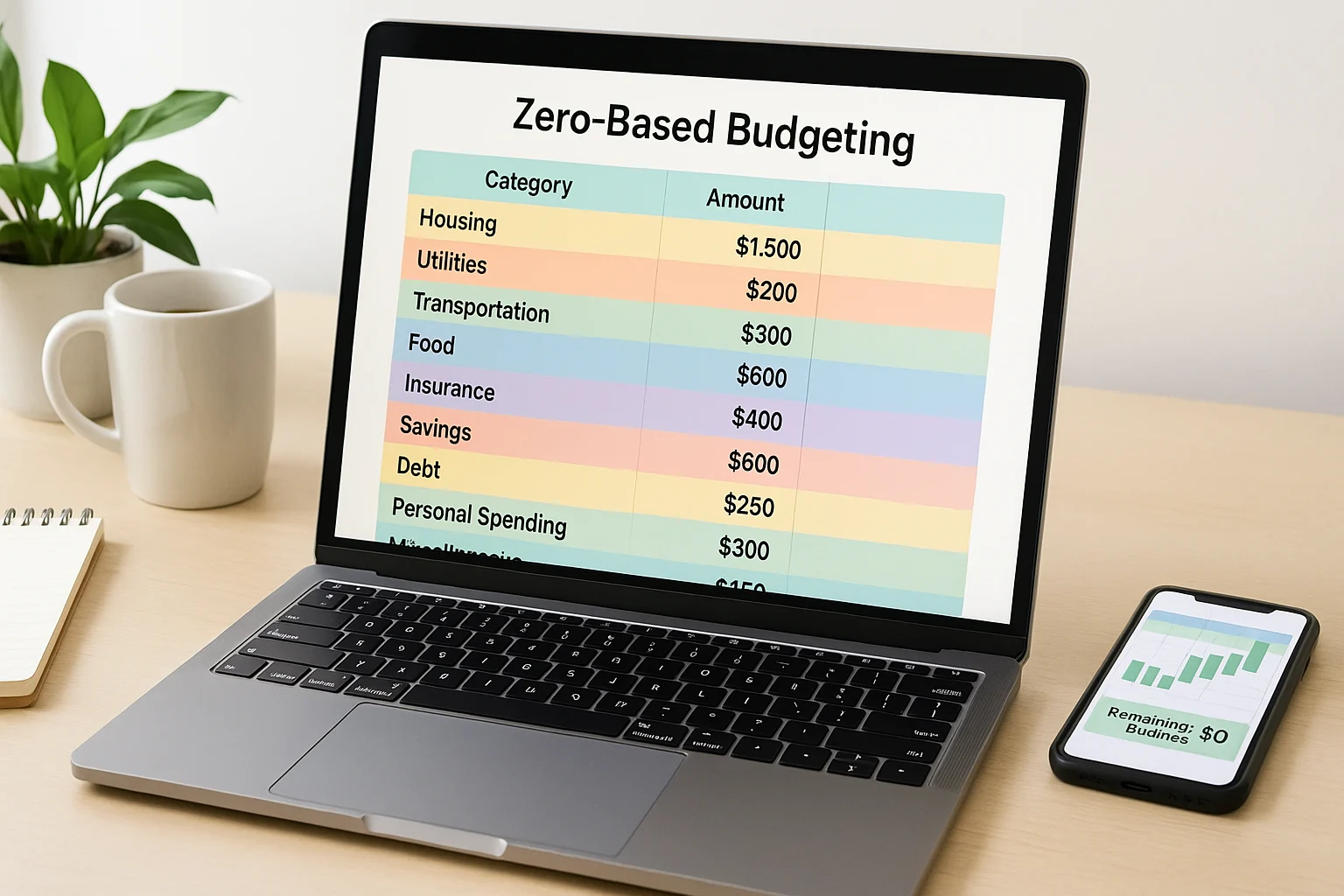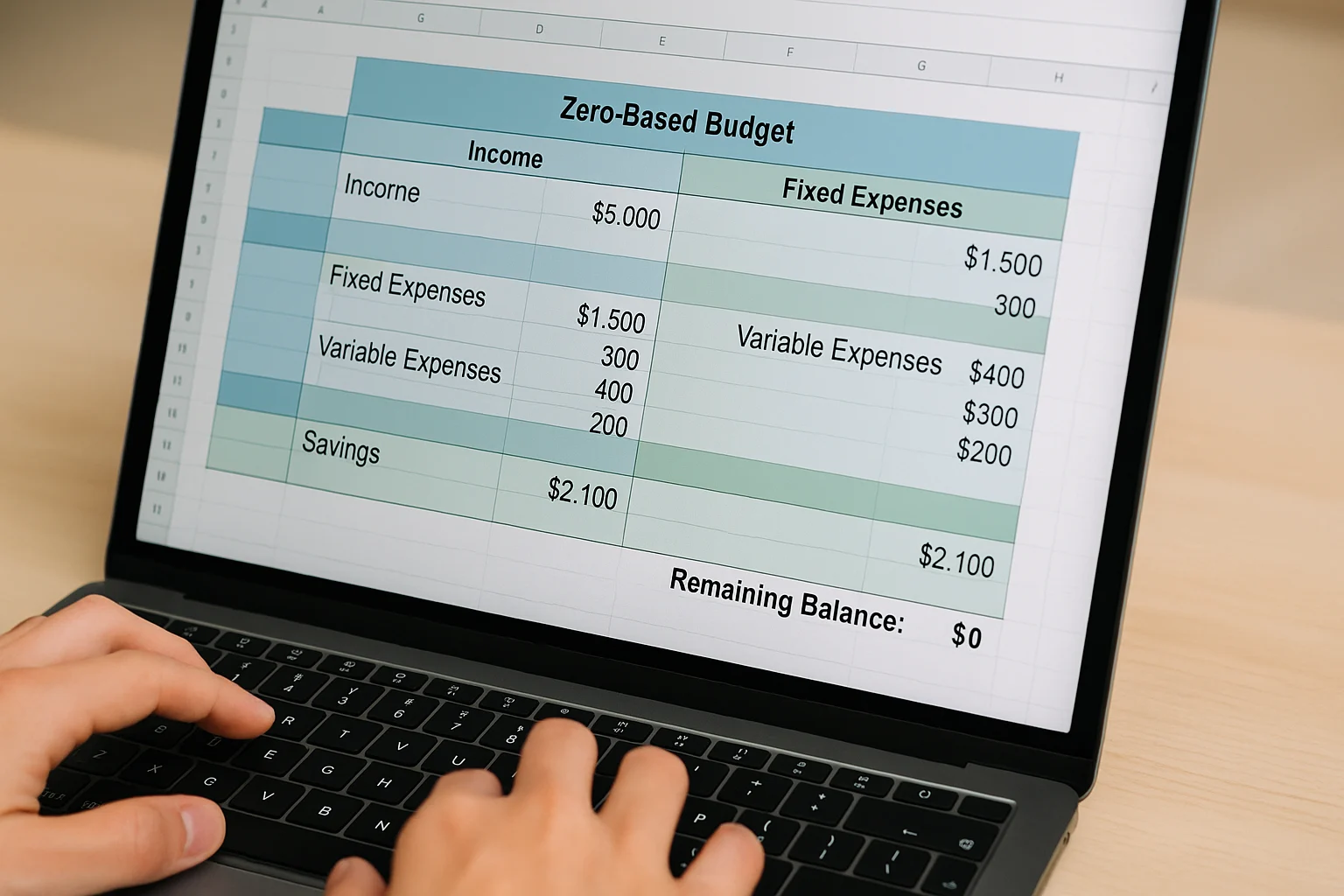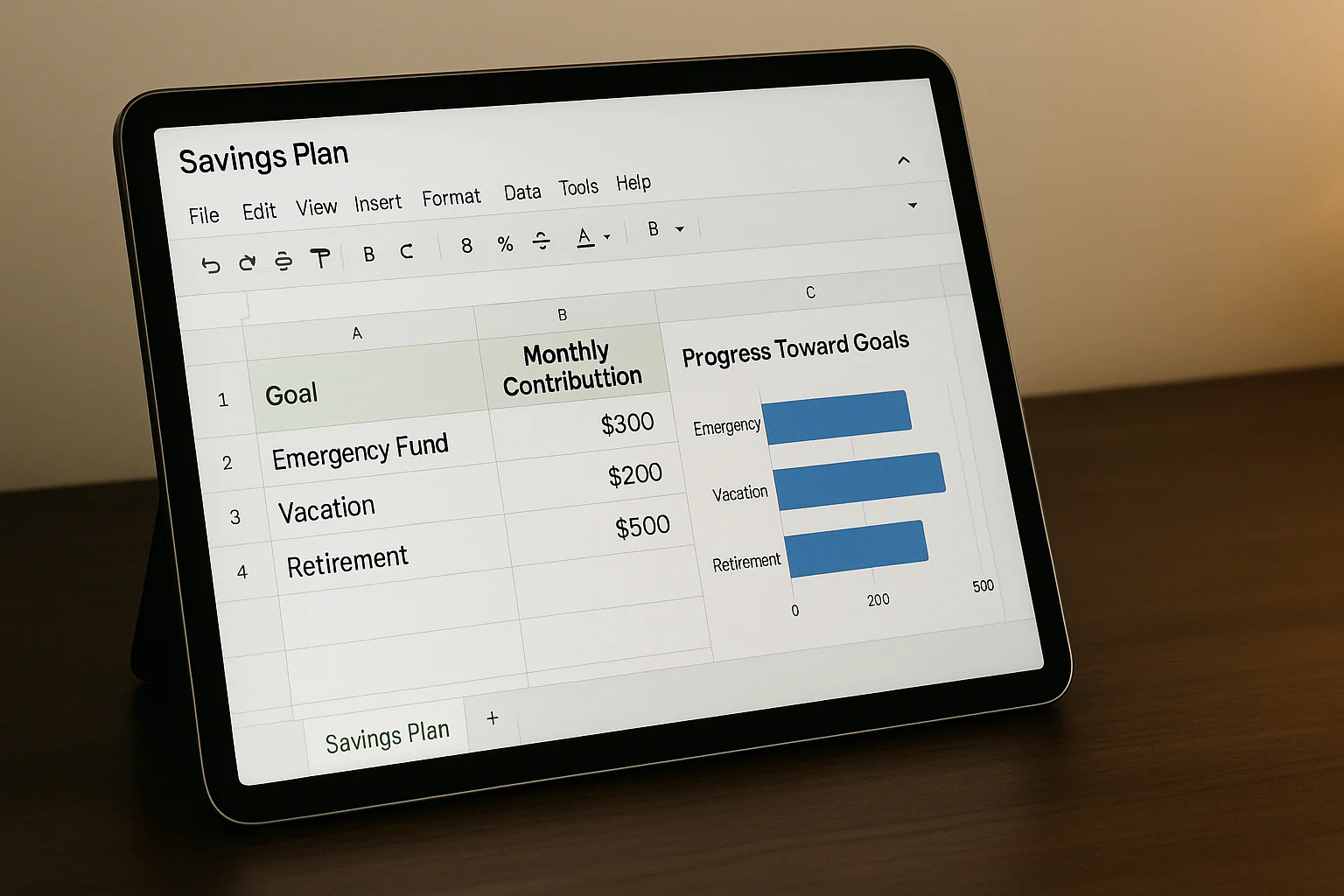
Struggling to track your money? I’ve been there. Our free zero budget spreadsheet in Excel or Google Sheets (plus an interactive tool) helped me give every dollar a job and finally breathe easier.
Unlike traditional budgeting, zero-based budgeting puts you in charge of every penny. Imagine saving for a dream trip, paying off debt, or building an emergency fund without the worry. It turned my financial chaos into calm—and it can do the same for you. This guide has everything you need to take control with a customizable budgeting tool. Let’s get started!
Try the Zero Budget Spreadsheet Tool!Table of Contents
- Key Takeaways of Zero-Based Budgeting
- What is Zero-Based Budgeting?
- Benefits of Zero-Based Budgeting
- Setting Up Your Zero Budget Spreadsheet
- Free Zero Budget Spreadsheet Templates
- Interactive Zero Budget Spreadsheet Tool
- Monthly Flow for Your Zero Budget
- Advanced Tips for Zero Budget Success
- FAQs About Zero Budget Spreadsheets
- Start Your Financial Journey Today
Interactive Zero Budget Spreadsheet Tool
Interactive Zero Budget Builder
Pop in your income and spending categories to whip up a zero-based budget in real time.
1. Your Monthly Income
Enter all the money you expect this month.
2. Add Spending Categories
Budget Summary

Key Takeaways of Zero-Based Budgeting
- Every Dollar Gets a Job: Zero-based budgeting means you give each dollar a role, so your income minus expenses and savings equals zero.
- Take Charge of Your Money: This approach keeps you in the driver’s seat, making sure your spending matches what matters most to you.
- Free Budget Templates: Grab our Excel templates designed for zero-based budgeting—perfect for getting started without hassle.
- Interactive Tool: Our budget builder shows your allocations in real time, spotting overages and helping you hit that zero balance.
- Build Smart Money Habits: Regular tracking turns budgeting into a powerful tool for lasting financial freedom.
What is Zero-Based Budgeting?
Simply put, zero-based budgeting (ZBB) makes sure every dollar you earn has a job. Unlike traditional budgeting, where money might just sit there, ZBB means your income minus expenses equals zero. For example, your dollars go to bills, groceries, fun, savings, or debt—nothing’s left unplanned.
This method pushes you to spend with purpose. Instead of crossing your fingers, you decide where each dollar goes, lining up your finances with your dreams. Many households struggle to stay on plan—see research on why a budget matters—which is why ZBB’s “every dollar gets a job” approach helps.
Benefits of Zero-Based Budgeting
A zero-based budget sheet can completely change how you manage your money. Here’s why it’s such a big deal:
- Clarity: It’s like getting a clear map of your money—you know exactly where every dollar’s headed. I found $50 a month in unused subscriptions and redirected it to savings, which felt like a win!
- Accountability: Giving every dollar a job keeps you honest—spending too much on coffee means less for groceries.
- Prioritization: ZBB helps you focus on what counts, like saving for a house instead of eating out. I skipped impulse buys to fund a trip, and it was so worth it.
- Reduced Stress: Knowing your money’s plan takes a huge weight off. I used to lie awake worrying about bills, but now I sleep easy.
- Spot Waste: Catch those sneaky “money leaks” and put them toward your goals.
- Faster Savings: Planning your savings upfront grows your nest egg quicker.
- Adaptability: Adjust categories each month to roll with life’s changes.

Setting Up Your Zero Budget Spreadsheet
Ready to get going? Excel or Google Sheets are awesome for budgeting because they’re flexible and can handle the math for you. Start by pulling together your financial details. I recommend checking last month’s bank statements to get a solid estimate for things like groceries or gas. If you’re budgeting with a partner or family, bring them in to agree on goals like a new home or college savings.
- Income: Jot down all your monthly sources (paychecks, side hustles).
- Fixed Expenses: List regular bills (rent, loans, subscriptions).
- Variable Expenses: Note costs that change (groceries, gas, fun).
- Savings Goals: Include emergency fund, vacation, or retirement.
- Debt Repayment: Add extra payments beyond minimums.
Step-by-Step Guide to Your Zero Budget
Here’s how to build your budgeting spreadsheet from the ground up:
Step 1: Set Up the Layout
Create sections for Income, Expenses (Fixed & Variable), Savings & Debt, and Summary.
Step 2: Input Income
List all your expected income:
| Source | Expected Amount | Actual Amount |
|---|---|---|
| Paycheck 1 | $2,000 | |
| Paycheck 2 | $2,000 | |
| Side Gig | $300 | |
| Total Income | $4,300 | $0 |
Tip: Use =SUM(B2:B4) to add up your income.
Step 3: List Fixed Expenses
Include your regular bills:
| Category | Expected Amount | Actual Amount |
|---|---|---|
| Rent/Mortgage | $1,500 | |
| Car Payment | $350 | |
| Insurance | $150 | |
| Phone Bill | $70 | |
| Internet | $60 | |
| Subscriptions | $40 |
Step 4: List Variable Expenses
Estimate costs that vary:
| Category | Amount | Actual |
|---|---|---|
| Groceries | $500 | |
| Dining Out | $200 | |
| Gas/Transit | $150 | |
| Utilities | $100 | |
| Personal Care | $50 | |
| Entertainment | $100 | |
| Clothing | $50 | |
| Miscellaneous | $50 |
Step 5: Plan Savings & Debt
Focus on your future goals:
| Category | Amount | Actual |
|---|---|---|
| Emergency Fund | $200 | |
| Vacation Fund | $100 | |
| Credit Card Debt | $100 | |
| Retirement Savings | $100 |
Step 6: Create a Zero Balance Check
Check that your income minus all your spending equals zero. Just add up your expenses, savings, and debt, then subtract from your income to hit zero. You’re all set when it balances!
| Item | Amount |
|---|---|
| Total Income | $4,300 |
| Total Expenses | |
| Total Savings | |
| Total Debt Repayment | |
| Total Allocated | $0 |
| Remaining Balance | $0 |
Use these Excel formulas: =SUM(Expenses+Savings+Debt) for Total Allocated, and =Income-Allocated for Remaining Balance.
Step 7: Track Actual Spending
Do a quick weekly check-in—it’s basically a 2-minute chat with your budget. Pop your actual costs into the “Actual Amount” columns and compare with your plan. This keeps your future budgets sharp and surprise-free.
Free Zero Budget Spreadsheet Templates
Building a budget from nothing can be tough, so we’ve made it easy with free Excel and Google Sheets templates. They come with:
- Ready-made categories for income, expenses, and savings.
- Formulas that do the math for you, no errors.
- Customizable spots to match your life.
- Spaces to track what you planned versus what you spent.
Grab them here:
- Excel Budget Template
- Google Sheets Budget Template
Monthly Flow for Your Zero Budget
Sticking to a zero-based budget takes a bit of effort, but it feels amazing—like a weight off your shoulders. Cheer for small victories, like keeping your grocery bill low, to stay pumped. The calm of having your finances sorted is worth every second. Use calendar reminders for weekly check-ins to keep on top of things. Here’s how to turn it into a habit:
Plan at Month’s Start
Round up your income and bill details, then:
- Open your budgeting spreadsheet.
- Enter your income and give every dollar a job across expenses, savings, and debt.
- Tweak until your income minus expenses equals zero.
Track During the Month
Log your spending in the “Actual Amount” columns. If something like a car repair pops up, trim another category (like dining out) to stay at zero.
Review at Month’s End
Check your actual spending against your plan, spot trends, celebrate wins, and adjust next month’s budget.
FAQs About Zero Budget Spreadsheets
Start Your Financial Freedom Today!
With a budgeting tool, you’re in the driver’s seat of your finances. Our free templates and interactive tool make it super easy to get started. Consistent tracking builds habits that lead to lasting freedom. Download your budget template and kick things off now!
This content is for informational purposes only and not financial advice. Consult a professional before making financial decisions.

